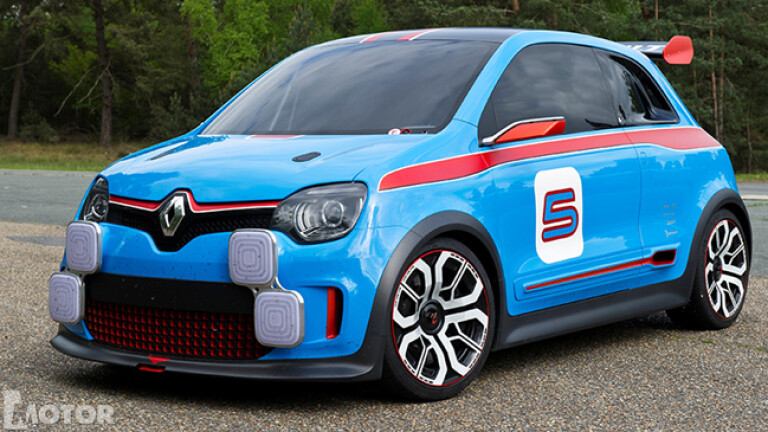
Story from the August issue of MOTOR magazine
They introduced F1 to modern turbocharger technology, won Le Mans, took a mid-engine rear-drive hot hatch into rallying, made one of the most famous and craziest vans of all time, brought light, dynamic front-drive naturally aspirated hot hatches back into fashion and then actually built a mid-engine V6-powered rear-drive production version of said hot hatch. They are Renault and we love these French madmen.
Their latest madcap venture is the Twin’Run concept car – a vehicle Renault claims will reinvent city cars as we know them as well as paying its dues to some of Renault’s craziest concept and production cars from the last 30 years. It was the newest of those machines, the insane Clio V6, which the Twin’Run draws most heavily on.
Like the limited-production Clio, the Twin’Run has a mid-mounted V6 engine that drives the rear wheels only. However, while the Clio used a production-ready shell, the Twin’Run sits on a custom tube-frame chassis made by French company Tork Engineering.
The blue and red bodywork stretched over the top of the custom frame is made up of composite glass-polyester panels, designed to evoke memories of the super-tough little Renault R5 Turbo and Maxi super-hatches that terrorised Group B rallying back in the 1980s. The headlights, door signage and those funky, super-slim LED driving lights (measuring just 25mm thick!) are all nods to the ’80s icon, though Twin’Run’s motorsport roots go much deeper than just aesthetics.
Rather than using any old V6 they had sitting around the factory, Renault installed a 236kW, 380Nm 3.5-litre V6 from a Megane Trophy race car. Coupled to a six-speed sequential gearbox, twin-plate clutch and limited-slip diff, the Twin’Run needs the race car-inspired double-wishbone suspension that uses lightweight aluminium construction and solid mounts. Renault chose to fit Ohlins coilover struts at each corner, with 22mm and 25mm swaybars (front and rear, respectively).
The race theme continues inside, with the roll cage left exposed, the fixed-back Sparco seats, high-mount gear-shifter and handbrake, Alcantara-wrapped steering wheel, door cards and dashboard, plus an aluminium pedal set designed for heel-toe driving. Twin’Run also features a 5.5-inch LCD screen behind the steering wheel in place of a regular dash, which shows all the vital signs.
Despite tipping the scales at a featherweight 950kg, Twin’Run features huge 356x32mm brake discs up front and 328x30mm discs in the rear, clamped by six-piston (front) and four-piston (rear) calipers. They hide behind 18x7.5-inch (front) and 18x8.5-inch (rear) wheels, shod in 205/40 and 245/35 Michelin rubber, front to rear.
The Twin’Run is claimed to do 0-100km/h in 4.5 seconds, going on to a top speed of 250km/h. We’d love to see a production version, Renault!

COMMENTS